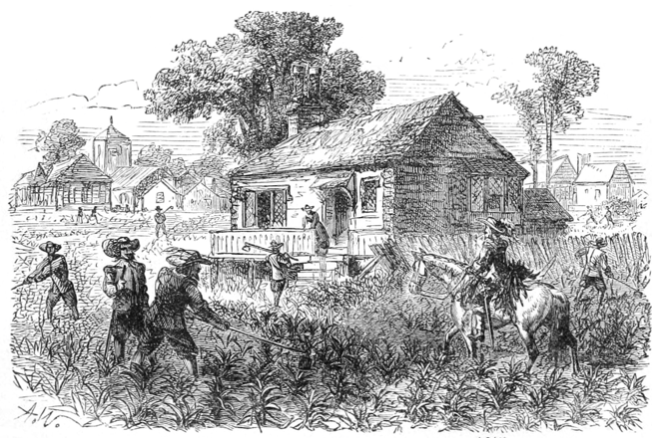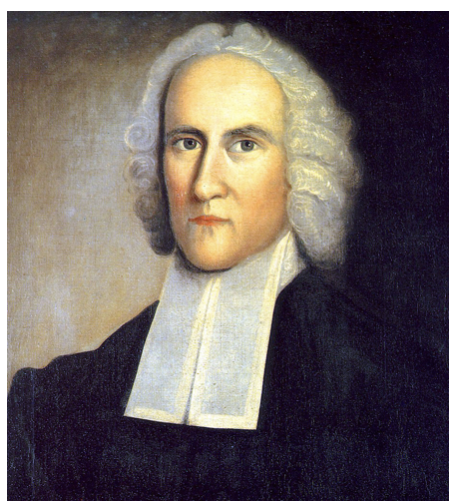Unit 2 Overview: Colonization of North America (1607-1754)
7 min read•june 18, 2024
Jed Quiaoit
AP US History 🇺🇸
454 resourcesSee Units
Moving on to 1607 - 1754: Contextualizing the Unit
Britain, Spain, France, and the Netherlands were all competing against each other for land, riches and power in the world between c. 1450-1800. Exploring and obtaining new colonies in the Americas were a big part of this competition. 💰
Their competition led to both alliances and conflicts between the colonists and the Native Americans living in America. Both the Europeans and Americans had to decide how they were going to be settled and governed. These decisions would lead to conflicts.
This unit will help us better understand the origins of life in early America. These origins include motives for colonial settlement, the evolution of government, their economies, religions and culture. A guiding question is: How did both Europeans and Americans influence these origins?
During this time period, the British established their thirteen colonies in the new world. Some of the most important aspects of the colonial period are the establishment of colonial economies, government structures, religious attributes, and the social make-up of the three regions (New England, Middle, and Southern colonies). The years of Period two are significant as well. The year 1607 represents the creation of England’s oldest permanent colony of Jamestown and 1754 designates the end of the colonial period as a result of the beginning of the Seven Years War. 👉👈
Colonial Economies
The economic system of mercantilism set the stage for the colonies to become sources of resources as well as a market for England. England enforced the system with navigation acts; however, much of the time England allowed the colonies a bit of freedom known as salutary neglect. Unfortunately, when England ran into monetary issues, they enforced the navigation acts, thereby ending salutary neglect and causing problems in the relationship with the colonies. 😠
The southern colonies such as Jamestown (also known as a Chesapeake colony) focused primarily on cash crops. Virginia and Maryland provided tobacco, South Carolina and Georgia provided rice and indigo, and North Carolina harvested tar and pitch. The middle colonies of New York, Pennsylvania, Delaware, and New Jersey focused on wheat production and trade. The remaining New England colonies provided timber🌲, beaver, shipbuilding, and Cod for the mother country🎣.

Representative governments flourished in the English colonies. Virginia established the House of Burgesses, which allowed all white male landowners to vote; New England colonies created town hall assemblies in which most white male church members could vote. All the colonies eventually created their own written constitutions, laying the foundation for our constitutional government down the road. John Locke was influential in creating the constitution for South Carolina. 🔒
Colonial Religion
All of the colonies were primarily Christian; however, the denominations varied in the regions. New England’s most successful colony, the Massachusetts Bay Company, was founded by John Winthrop as a Puritan settlement designed to be “a city on a hill.” Although not all New Englanders were Puritan, many were separatists and most shared a belief in Calvinism.
South Carolina and Virginia were primarily Anglican, and, although Maryland was founded as a Catholic refuge, it became primarily protestant over the next several decades prompting the passage of the Act of Toleration setting an exemplar in regard to religious toleration. The middle colonies represented multiple religions and Pennsylvania began as a Quaker colony founded by William Penn.
One of the most important themes of Period Two is the First Great Awakening. As enlightenment ideas began to spread to the colonies, the practice of Deism became more common. Preachers such as Jonathan Edwards and George Whitefield became quite influential. As people began to study the Bible on their own, folks could challenge their traditional preachers. As a result, new denominations began to arise. The challenge of traditional church roles lays the foundation for the colonies to challenge the monarchical government in the coming decades. 😴

Southern colonies such as Virginia had a much tougher time creating stable family structures. Since most Virginians were indentured servants, the gender ratio was unequal. Thus, fewer families existed in the early decades due to the headright system. The headright system provided 50 acre tracts of land for each immigrant brought to the colony. As a result, male laborers were brought to the colony to farm tobacco. 🌿
The New England colonies began with a lot of stability due to the fact they were settled primarily by religious families seeking refuge. As a result, there is an equal gender ratio allowing for a natural increase in population. New England families focus on education as evident by the founding of Harvard University in 1636.
Native Conflicts
All the colonies had conflicts with the Native Americans. Pennsylvania had the fewest because the Quaker beliefs viewed natives much more benevolently than the other colonies. The Virginia colony had battles with the Powhatan and the New England settlers battle with the Wampanoags. Ultimately, King Philip's War ended with the New England natives being driven westward. 💥
Major People and Events:
John Smith: English explorer who helps provide law and order to the Jamestown colony.
Lord Calvert: Founder of the Maryland colony.
William Penn: Quaker founder of the Pennsylvania colony.
John Rolfe: Agriculturalist who develops a cash crop of tobacco in Jamestown helping create a profitable colony.
Powhatan: Native tribe living along the James River near Jamestown.
Puritans: Religious group in New England desiring to purify the Anglican Church of its Catholic traditions.
Separatists: Similar to Puritans; however, they wish to break away from the Anglican church.
John Winthrop: Puritan founder of the Massachusetts Bay Colony wishing to create a “City on a Hill.”
Nathaniel Bacon: Virginia Settler challenging the laws of the Virginia Governor William Berkeley.
Jonathan Edwards: First Great Awakening preacher known for his “Sinners in the Hands of an Angry God” sermon.
George Whitefield: Powerful speaker and English Preacher during the First Great Awakening encouraging Christian beliefs throughout the colonies.
Roger Williams: Separatist who was banned from the Massachusetts Bay Colony for his dissenting views.
Anne Hutchinson: A woman banned from the Massachusetts Bay Colony for her dissenting views.
John Peter Zenger: New York journalist accused of libel for his critical views of the governor but later acquitted. His acquittal was seen as support for freedom of the press.
Act of Toleration: A law passed in Maryland allowing religious freedom for any Christian group that believed in the divinity of Jesus.
Holy Experiment: Quaker colony of Pennsylvania.
Jamestown: The first permanent English colony founded in Virginia, 1607.
Mayflower Compact: Governing document for the Plymouth colony.
King Philip's War: Fierce battles between the New England colonies and the local Natives led by Metacom (King Philip).
Bacon’s Rebellion: Rebellion of back-country Virginia settlers protesting the harsh, aristocratic policies of Governor Berkeley.
Joint Stock Company: An organization of investors seeking profits from exploration.
Mercantilism: Economic system based on a favorable balance of trade between the mother country and its colonies in order to maintain gold and silver within the empire.
Navigation Acts: Laws passed by England to uphold the economic policy of mercantilism.
Headright System: Law passed by England to encourage settlement in the new world by offering settlers fifty acres of land for every individual they brought to the new world.
Triangular Trade: System of trade between the New World, Europe, and Africa in which resources and rum were traded for manufactured goods and slaves.
Main Events
1607: Jamestown was founded.
1619: House of Burgesses created in Virginia, First African slaves arrived in Virginia.
1620: Pilgrims sailed on the Mayflower.
1636: Harvard created in Massachusetts
1649: Act of Toleration
1675: King Philip’s War
1676: Bacon’s Rebellion in Virginia.
1692: Salem Witch Trials.
1730s to 1750s: First Great Awakening.
1754: French and Indian War begins.
Exam Skills
1. European monarchs established different trading, cultural, and governmental systems in the New World.
2. English colonial economies and governments developed during the period of salutary neglect. Look for this to change following the Seven Years War in the next period.
3. Each colony developed its own social and religious norms creating stark contrasts in the three regions. Comparing and contrasting these regions is an important skill to learn throughout period 2.
4. Interaction between colonies and natives was peaceful as trade developed. However, it began to turn violent as the colonial populations increased and settlers moved westward into native territories. Westward migration is a common theme throughout US History.
5. Communication and trade began to develop throughout the colonies, especially as a result of the First Great Awakening. In addition, challenges to the Church result in the development of many new denominations.
Major Trends to Note
- European powers compete for colonies. Each country has different motives for colonization and settles in different landscapes and climates. This leads to various settlements.
- Interaction between Europeans, colonists, and native Americans includes both cooperation and conflict. The identity of America and its institutions is influenced by the European way of life. Is American becoming more European or more American?
- Europeans want cheap labor for goods being produced in America. Indians and white indentured servants were their original laborers. Bacon’s Rebellion forces Europe to embrace the African slave trade as slavery accelerates.
- The Indians form alliances and rivalries with both Europeans and colonists in an attempt to preserve their land and way of life.
- Colonists begin to desire their own, independent culture and institutions, such as government, churches, economies, and laws. This leads to conflict with their European bosses.
Browse Study Guides By Unit
🌽Unit 1 – Interactions North America, 1491-1607
🦃Unit 2 – Colonial Society, 1607-1754
🔫Unit 3 – Conflict & American Independence, 1754-1800
🐎Unit 4 – American Expansion, 1800-1848
💣Unit 5 – Civil War & Reconstruction, 1848-1877
🚂Unit 6 – Industrialization & the Gilded Age, 1865-1898
🌎Unit 7 – Conflict in the Early 20th Century, 1890-1945
🥶Unit 8 – The Postwar Period & Cold War, 1945-1980
📲Unit 9 – Entering Into the 21st Century, 1980-Present
📚Study Tools
🤔Exam Skills
👉🏼Subject Guides
📚AMSCO Notes

Fiveable
Resources
© 2025 Fiveable Inc. All rights reserved.